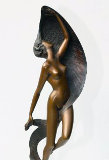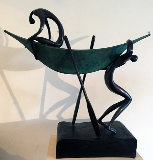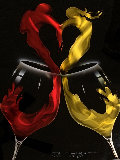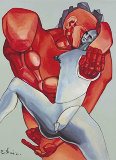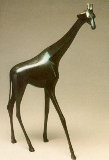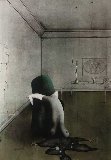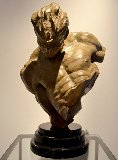



Looking For Deep Water Bronze Sculpture 1992
Leon Bronstein
Sculpture : Bronze, Patina
Size : 27x28 x10 in | 69x71 x25 cm
Edition :
-
We have buyers waiting
SOLD I have one and want to sell it
Year2002
Sculpture Foundry Mark
Condition Excellent
Provenance / HistoryOld City Caesarea Gallery, IsraelrnFrom the Artist
Certificate of AuthenticityArt Brokerage
LID83384
Leon Bronstein - Russian Federation
Art Brokerage: Leon Bronstein Russian Sculptor: b. 1951. Sculptor Leon Bronstein was born in Moldavia, Russia in 1951. A sculptor of remarkable talent, he explores the power and beauty of relationships, magically transforming the human figure into fluid shapes. Bronstein's passion for art will never lose its vigor. 1980 was for him a new beginning: finding a new path in life transforming from technician to talented sculptor. Expanding his artistry from carving wood to casting bronze, his determination to express freedom fuels his creative power. The whole of his development as a sculptor is an attempt to understand and realize more completely what form and shape are about, and to react to form in life. As a child Bronstein had molded clay and worked with wood. In 1980, having emigrated to freedom with his family, he found himself out of work and unable to get a job as an engineer or watchmaker. At a woodshop near the city of Caesarea, he was attracted to the beautiful grain of olive wood and there picked up a piece and fashioned a small figure. The little sculpture had such immediate appeal to the shopkeeper that Bronstein's future course was clear. In the early part of his artistic career, Bronstein made about one thousand sculptures in olive wood. Through devoting himself to these sculptures he gained an intimate sensitivity to natural forms, but after some years he felt he had come to an endpoint both intellectually and spiritually. In time he turned primarily to bronze. n Though Bronstein's semi-abstract sculptures are notably "modern" in style, they have warmth that modernist works often lack. Part of this comes from his choice and treatment of subject. But it also comes from his approach to form. He frequently utilizes the idea of piercing matter to reveal the surrounding space, and the resulting interaction between volumes and voids in attenuated, curvilinear shapes creates a marvelous, all-embracing dance of energies. Even where his forms have monumentality, there is a sense of constant movement and inner livingness. Bronstein's art speaks of the eternal as it expresses itself in the cyclic, ever-regenerative forces of love, companionship, and harmony.


